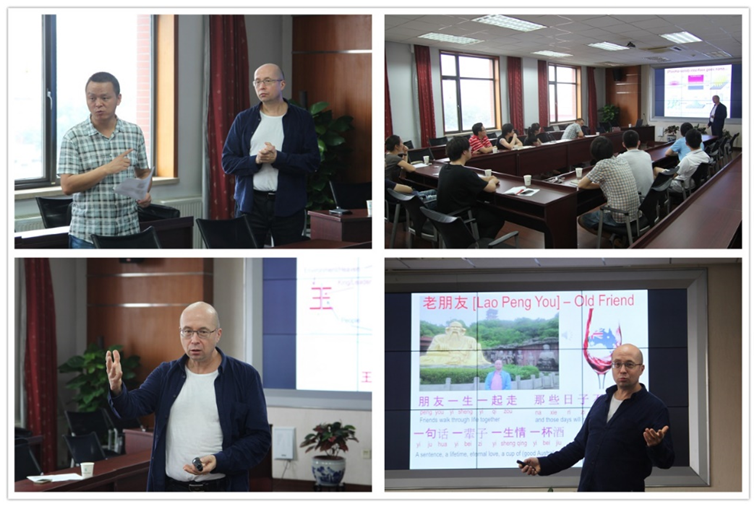| |
|
On June 28th, invited by IEE of CAS, Prof. Kostya (Ken) Ostrikov made a presentation at 705 Lecture Hall, on the topic of “New vistas of plasma nanoscience: catalysis and energy”. This lecture was presided over by Prof. Tao Shao, and about 20 researchers and postgraduates attended the meeting.
Kostya (Ken) Ostrikov is Professor of Queensland University of Technology and Science Leader of Office of Chief Executive of CSIRO. His achievements include Pawsey (2008) medal of Australian Academy of Sciences, Walter Boas (2010) medal of Australian Institute of Physics, Building Future Award (2012), NSW Science and Engineering Award (2014), election to the Academy of Europe (2015), >10 prestigious fellowships/professorships in 6 countries, several patents, 3 monographs, and >500 journal papers. His research on nanoscale control of energy and matter helps solve the grand challenge of directing energy and matter at nanoscales, to develop renewable energy and energy-efficient technologies for a sustainable future.
 At the beginning of the talk, Prof.Ostrikov pointed out two fundamental questions of plasma nanoscience: 1) what happens when low-temperature plasmas face a solid object of nanoscale dimensions and 2) is it possible to reduce the plasma size to the nanoscales? And what unique and interesting physical and chemical effects one could produce through these localized interactions at plasma-solid interfaces?
Surrounding the above two questions, Prof. Ostrikov deciphered the interactions at the plasma interface in detail, which lead to the many synergistic effects and in turn appear useful in the applications of low-temperature plasmas and in the attempt to harness unique effects when attempting to reduce the size of plasmas down to nanometer domain. The most relevant plasma interfacial phenomena and the relevant physical limitations in the approach to generate nanoplasmas were discussed. Also, he discussed and interpreted related effects owing to nanoscale plasma-surface interactions, as well as size-dependent and other intriguing nanostructure properties.
At the end of presentation, Prof.Ostrikov replied to questions raised through the means of WeChat or face-to-face, and made deep communication with researchers and postgraduates on nano-plasma technical prospects. This presentation made our researchers a comprehensive understanding of the combination of nano-science and plasma technology.
(Editted By Shuai Zhang and Xingmin Hou, Photos by Bin Hai)
|



